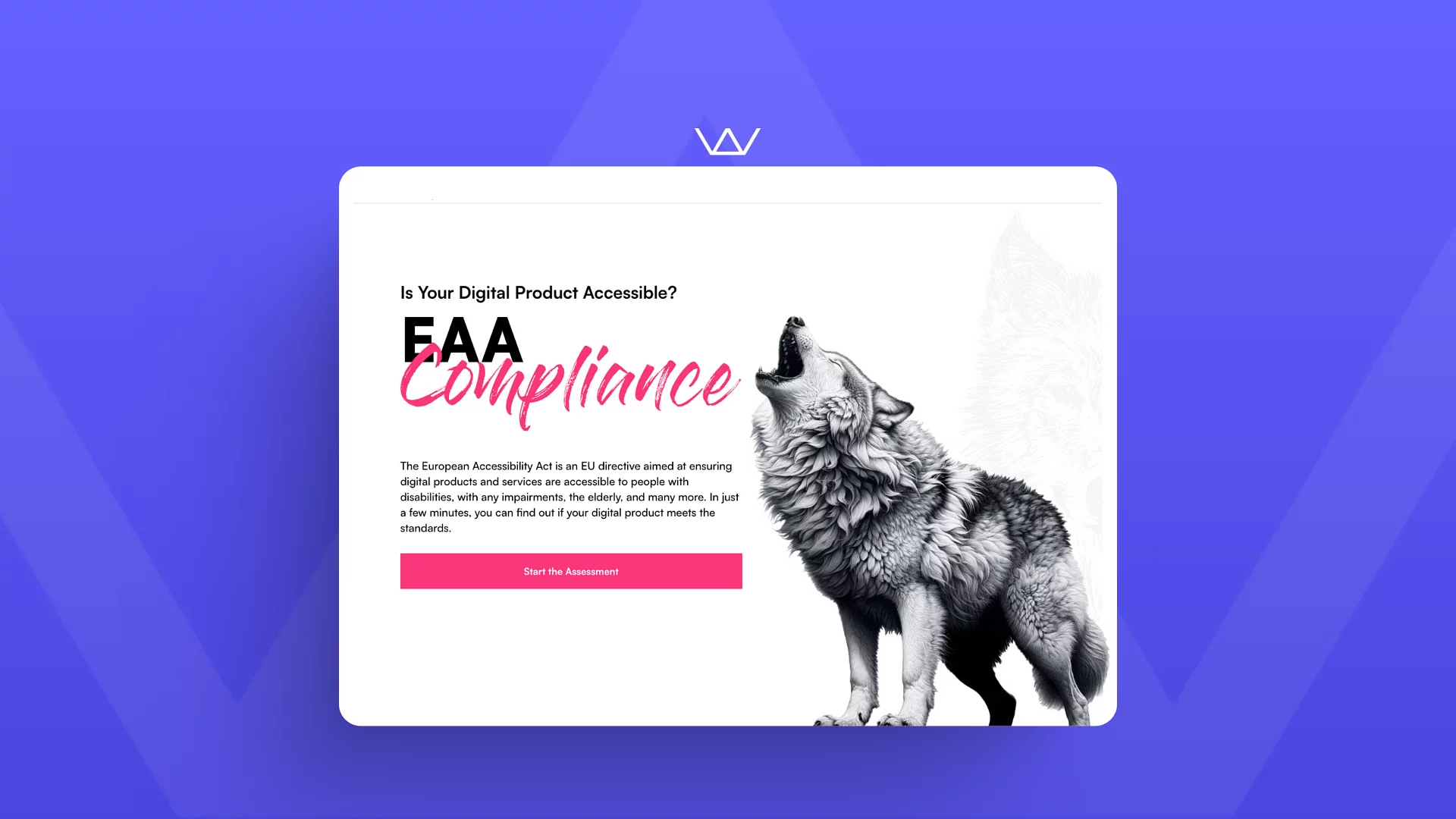
What is Personal Data and how it became the coin for personalized UX?
Corina
Marketing Specialist
4 min
Aug 11, 2020
What is personal data and how does it work?
Personal data refers to any information relating to an identified or identifiable person; This means you can identify someone be it through an identifier such as a name, an identification number, location data, an online identifier, or to one or more factors specific to the physical, physiological, genetic, mental, economic, cultural or social identity of that natural person.
How is personal data used by most digital products?
We live in a world where most of our activity takes place in the digital environment. From ordering lunch or binge-watching for a weekend to any type of communication: we work, talk, and see people with just a single click.
Once we got used to online services and apps, we also started to have higher standards in terms of usability and to have experiences that are as personalized and relevant to our needs as possible — from a movie and/or video recommendations, language identification, to our shopping history on a site, or recently seen products and offers.
In order to create a good User Experience, User Interaction, flows, services, features, or discounts, companies need to cluster and analyze some data about you.
This is one of the reasons everyone asking for our email? Or do we keep seeing that cookie banner all around? We accept cookies, but how many times do we really read the terms and conditions of the privacy policy?
We definitely do not want to have our data processed, but we do not really think of it in this way. And, of course, we (definitely) dislike the idea of having our activity monitored on a site using video recording applications of the sessions we have, clicks, mouse movements, and any other action that is involved in the activity on a site or in a web application or a mobile application. But we want to receive only relevant content.
This is called the paradox of privacy!
How do we accept (or manage) the discrepancy between our intentions and expectations as consumers? how to protect our privacy and keep our expectations vs how we (actually) behave in the online world?
Before jumping to an answer to this question, let’s talk about personalization to add a bit of context.
The importance of personalization (and internationalization) in the digital environment
People are not static — au contraire: we use multiple social networks, communication channels, a lot of different devices (console, laptops, tablets, phones), and our interests change over time or depending on the context.
This means the experience with a product or service is completely different in terms of UX / UI or content for each of us. To these, we can add our interests, the content relevance, and the way we consume everything.
Localization, be it for marketing campaigns, content, or software, is the process of translating your business or digital product into multiple languages and adapting it across cultures.
Localization Example
A single language can be used in multiple parts of the world — such as English, French, or Portuguese, and your product should adapt to the regional and cultural conventions of the customer’s geolocation. Having it internationalized, the entire content, flow, and feel will seem as if it is an app built for specific native speakers, no matter who is using it.
We are keen to accept and use services and products that are closer to our culture, way of living, our native language or idioms, specific colors, symbols, and design elements.
This is not a new topic at all; in the offline environment it has been used for a long time — think of tailors! We give them contact details, they take our measures, we tell them what clothes, materials, and colors we like, where we want to wear them, what makes us feel comfortable (or not) and they offer us a product. These also fall under personal and behavioral data and we offer them in exchange for a personalized product.
However, in the online medium, even though most of us buy and use things only if they are customized for our needs or if they are recommended to us, we are reluctant to accept the data processing when it comes to our profile (e.g., Spotify customizes playlists for you based on what you have listened to before).
So, how does personalization actually work?
There are multiple ways to customize a product, but most of them comprise different types of data. Let’s declutter them!
Primary types of data used to personalize online experiences and design stunning UX/UI
- Use browser information (e.g., browser locale) to localize content: colors, language, most appropriate phrases, etc.
- Use tokens to personalize emails, landing pages, website pages, or chatbots messages based on your cookies and CRM. Once the right tokens are identified, send out localized emails based on your audience’s geolocation, timezone, language, jokes, and holidays or local celebrations.
- Focus on categories like location (location, zip code), contact (name, email), company (industry), or any other data you have in your site’s or app’s forms. Use that data to personalize your chatbot messages, your pricing, your promo offers, or your campaigns!
- Display the pricing currency, measures, decimal separators, address, or dates in your audience’s format preference.
- Provide multilingual customer support based on your top users’ language
- Use visuals or audio files people are used to in their region: you may want to use visuals, colors and provide push notification sounds or in-app sounds based on the users’ culture
- Make sure your brand name, images, emojis, icons, or symbols don’t have peculiar connotations in your users’ country — unless, you run a fun campaign about it, as Wix did! But you can think also Laputa: Castle in the Sky — when everyone cheered Studio Ghibli for it, but Spanish and Italian speakers were a bit concerned regarding its translation.
Managing the confidentiality paradox
- Understanding the principles and requirements of confidentiality and regulations in terms of personal data and personalization usage. — e.g., the Asian National Privacy Commission, GDPR in Europe, The Data Protection Act 2018 in the UK, Personal Information Protection and Electronic Documents Act (PIPEDA) in Canada, or HIPAA, FCRA, ECPA, and computer security, privacy, and criminal law in the US.
- Creating a user experience using the relationship between personalization and privacy as a symbiosis, defining the requirements for accessing and using data at the individual level. Thus, recording or requesting data is done more naturally, provides confidence, and is more contextualized.
- Focus on customers, not their data. Until recently, regardless of the service accessed, data was the first information stored. Now the expectations are different: we offer the data in exchange for a remarkable, contextual experience, but also to streamline the processes (search, purchase, etc.).
- Balancing: the line between privacy, the work environment, and what we do online is becoming increasingly difficult to trace, and the role of online services is to innovate marketing and customer service, to develop new products, security protocols, and risk assessment, to address the specific needs of consumers.
- Ethics and Transparency: We all demand transparency in the collection, use, and sharing of personal data. And brands will have to develop their information actions beyond a banner cookie and gain customer trust by establishing actions that provide transparency in the use of data, measures taken for their confidentiality, and also training employees on the use of data ethically.
Key takeaway
At the end of the day, personalization and user experience for web platforms or mobile apps (or even a site) require an essential ingredient: Personal data. There is no other way.
And even though, until recently, consumer data was collected without transparency, nowadays there are regulations and public awareness regarding the value and usage of personal data — and this is only the beginning of a data-driven journey for the digital products to be built and for the authorities and organizations to create even stronger regulations and enforce them accordingly.
pack knowledge

Is your digital product ready for the European Accessibility Act (EAA)? Take the assessment to find out!
Oana
Marketing Specialist
5 min
Mar 20, 2025
With the 2025 deadline approaching, ensuring your website or app meets accessibility standards is important. Our free EAA assessment helps you quickly check compliance and identify areas for improvement. At Wolfpack Digital, we specialize in making digital products accessible, user-friendly, and future-proof. Take the assessment today and ensure your platform is inclusive for all users!

How Much Does Web Development Cost? A Complete Guide
Oana
Marketing Specialist
10 min
Feb 26, 2025
Building a website is more than just designing pages—it’s about creating a functional, high-performing, and scalable digital presence that meets your business goals. Whether you're launching a simple business website, an e-commerce store, or a custom web platform, the cost and approach will vary based on complexity, functionality, and long-term needs.

UX/UI Design: Collaborating with a Software Development Agency When You're New to the Game
Cristian
Head of UX/UI Design
7 min
Feb 18, 2025
This guide will walk you through every stage of the UX/UI design process, from the initial conversation to launching a product you can be proud of. Understanding the design thinking process, which includes empathizing, defining, ideating, prototyping, and testing, is crucial for creating user-friendly products and solutions.


Brief us and let’s work together
